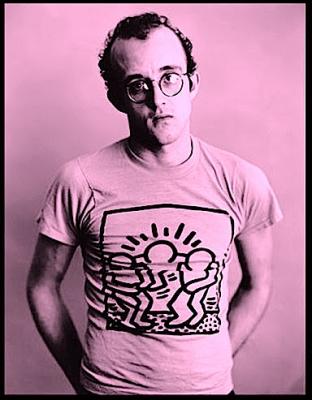The Early Years 1978–1982 Is Explored In This Bold New Show
A new exhibition exploring the early New York works of Keith Haring has opened at the Brooklyn Museum. This is the first large-scale exhibition to look at his early career which is that of one of the most influential and best-known American artists of the twentieth century. The exhibition traces the development of Haring’s extraordinary visual vocabulary and includes 155 works on paper, numerous experimental videos, and over 150 archival objects, including rarely seen sketchbooks, journals, exhibition flyers, posters, subway drawings, and documentary photographs.
Along with making his two diminutional art, Haring put a great deal of energy into facilitating performances and exhibitions for friends and fellow artists. Merging his interests in art and New York’s vibrant nightlife, he utilized unconventional locations such as the Mudd Club, where he curated the fourth-floor gallery, and Club 57. To advertise the exhibitions, some of which lasted only one night, Haring produced countless flyers with the aid of a Xerox machine. In addition to documenting his curatorial practice, these flyers are themselves unique works of art. Some of the exhibitions Haring presented were tied to his own artistic interests, such as black-light art and Xerox art, and many were created through open calls for artist submissions—in keeping with his desire for a more inclusive art world and the use of new channels to reach more people.
During his time at the School of Visual Arts, Haring began exploring the possibility of video as a medium and extension of his painting process. In his first video, Painting Myself into a Corner, he paints rhythmically to the pulsating beat of the band Devo, whose music becomes the soundtrack to the video. This piece illuminates the close relationship between the physicality of the artist, the act of painting, and the final product. Haring viewed himself as such an integral part of his art that he literally paints himself into the piece—in effect cornering himself in his own aesthetic world.
The exhibition chronicles the period in Haring’s career from his arrival in New York City through the years when he started his studio practice and began making public and political art on the city streets. Immersing himself in New York’s downtown culture, he quickly became a fixture on the artistic scene, befriending other artists such as Jean-Michel Basquiat and Kenny Scharf, as well as many of the most innovative cultural figures of the period. The critical role that these relationships played in Haring’s development as a public artist and facilitator of group exhibitions and performances is also explored. Pieces on view include a number of very early works never before seen in public; seven video pieces, including Painting Myself into a Corner (his first video piece) and Tribute to Gloria Vanderbilt; and collages created from cut-up fragments of his own writing, history textbooks, and newspapers.
The exhibition is curated by Raphaela Platow and co-organized by the Contemporary Arts Center, Cincinnati and the Kunsthalle Wien. The Brooklyn presentation is organized by Tricia Laughlin Bloom, Project Curator, and Patrick Amsellem, former Associate Curator of Photography, Brooklyn Museum.
Brooklyn Museum Morris A. and Meyer Schapiro Wing, 5th Floor March 16–July 8, 2012



Watch Rare Video

